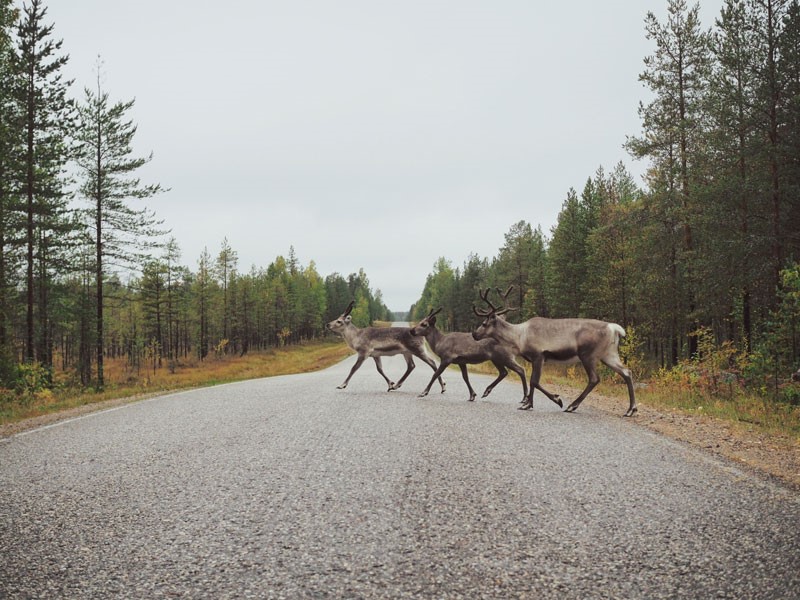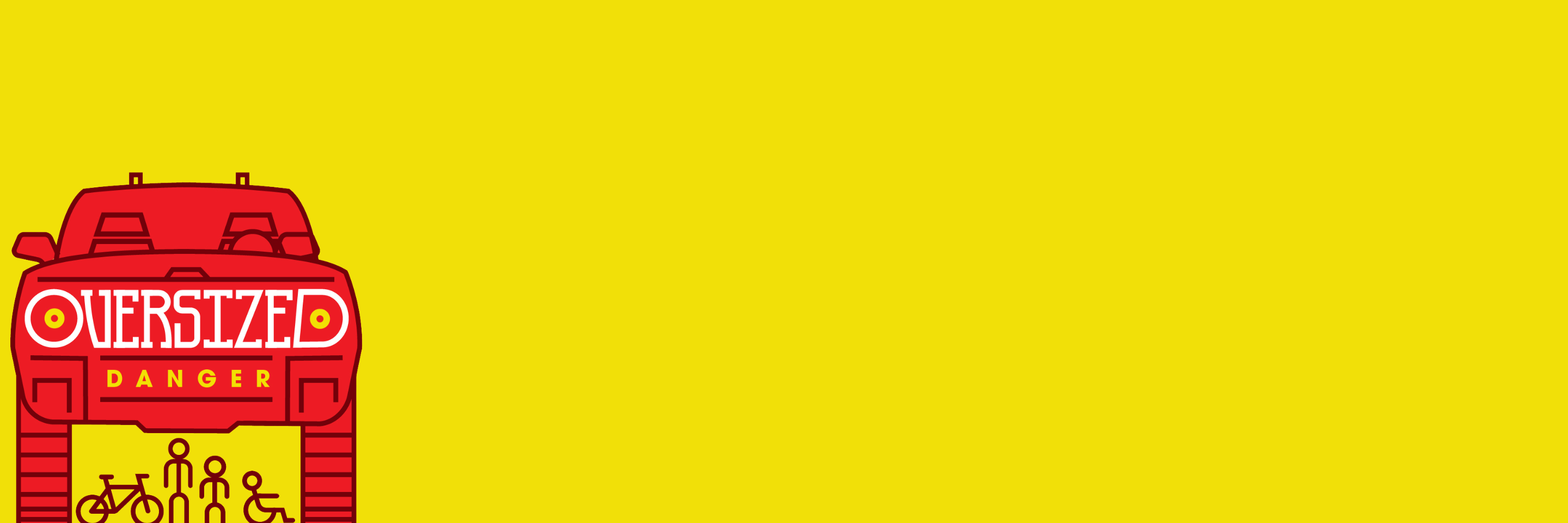Written By: Salvatore Shaw and Ryan Marinacci, Student-at-Law
As spring approaches, drivers must be especially vigilant for increased wildlife, like moose and deer, on rural roads.
While humans know that the road can be a dangerous place, wildlife may actually be attracted to the wide-open spaces roads provide. Roadside plants and road salt attract wildlife. In the winter, plowed roads offer easier movement. In the summer, increased wind provides relief from biting insects.
There are two peak times during the year when the risk of a collision with wildlife is highest: May and June and from October to January.[1]
According to the Ontario Road Safety Annual Report and Government of Canada Statistics, the number of animals struck on Ontario roads has increased by 47% from 1999 to 2014.[2] There are approximately 14,000 wildlife-vehicle collisions happening every year in Ontario.[3]
When driving, always be on the lookout for any wildlife attempting to cross the road, especially around sunset or nighttime. The peak time of day for wild animal-vehicle collisions is between 7 p.m. and midnight.
The vast majority (89%) of wildlife-vehicle collisions occur on rural, two-lane roads and 86% occur in good weather.[4] Dry road conditions and clear nights also increase risk.
The majority of wild animal-motor vehicle collisions occur on stretches of road where:
- There is an abundance of good habitat and forage near the roadside.
- There is a nearby water source.
- There is an intersection of drainages and creeks with roads.
- There are straight, long, and wide stretches of road.
Expect the unexpected.
There is a certain amount of space in which an animal feels safe, but once that boundary is violated, the animal’s reaction is unpredictable. Even if an animal sees you, it may still jump in front of your vehicle. Some animals travel together, for example, deer, bears, and mother-offspring pairs. If one animal crosses the road, others may follow. If an animal has crossed the road, it may turn and cross again. Animals standing calmly at the side of the road may bolt unexpectedly.
Here are five tips to avoid moose and deer collisions and what to do if a collision is unavoidable.
- Slow down
Animal collisions often occur at night when visibility is reduced and animals are more active due to lower traffic volume. Driving slower at night is important because drivers have a reduced ability to see animals already on the road beyond the headlights and to scan the sides of the road for animals about to jump across the road. Driving slower also reduces the distance required to come to a full stop and makes it safer to take evasive action if an animal unexpectedly darts across the road.
- Pay attention
As always, pay attention to the road signs around you. In particular, watch for Wildlife Warning Signs, which are yellow diamond-shaped signs which, in Ontario, typically have an image of a deer on them. These signs are a reminder to remain alert and cautious and to keep an eye out for wandering wildlife. The signs are located in high wildlife use areas. Keeping an eye out for glowing or shining animal eyes ahead and on the side of the road at night can also help to avoid collisions. Drivers and passengers should actively watch for wildlife – on the road, in the ditch, on the shoulder, and in the right of way; watch for any movement along the sides of the road. Shining eyes mean your headlights are reflecting off the animal’s eyes. If you notice flickering in the headlights of oncoming cars or in the tail lights of the vehicles in front of you, it could be an animal crossing the road. Roadside reflectors that suddenly disappear or reappear may indicate an animal crossing in front of them. Don’t forget to pay equal attention to both the right and left-hand sides of the road, animals may cross from either side. Lastly, think about the landscape that you are driving through, is it a good habitat for wildlife?
- Use high beams, wash windshields frequently and consider lane choice
Safe use of high beams and frequent windshield washing also helps to increase visibility at night. Using high beams allows drivers to see further and wider than when using regular beams. It can also help to spot animals that would otherwise be beyond what is illuminated by the regular beams. Having a clean and clear windshield free of any obstructions or debris further increases visibility. This is important because the dark outline of an animal can blend into the backdrop when driving at night and be difficult to notice. Ensuring the windshield is clean and clear is a simple way to make it easier to pick out animals at night. Also, consider driving in the lane farthest away from the ditch if available.
- Do not slam the brakes
If an animal unexpectedly comes across the roadway, it is important not to slam on the brakes or to quickly swerve. Slamming on the brakes can cause a vehicle to lose control and leave the roadway, and can pose a danger to other vehicles on the road. Consider honking your horn or flashing your lights to scare animals off the road – however it does not usually work for moose. If necessary, firmly but safely apply the brakes and come to a gradual stop. This will help avoid putting other vehicles at risk and reduce the chances of losing control and leaving the roadway.
- If hitting the animal is unavoidable, consider your options
If smaller animals are in your way – think carefully – is it safe to swerve? Do not take unsafe evasive actions. Serious incidents can occur when drivers lose control of their vehicles trying to avoid an animal. Particularly in the case of larger animals, the biggest threat to drivers is the body coming through the windshield after impact. As such, if a collision with a large animal is completely unavoidable, aim for the spot where the animal is coming from rather than where it is going. Keep your eyes on where you want your vehicle to go, not on the animal. You tend to drive where you look – if you are looking at the animal, that is where the vehicle tends to go. Break quickly and firmly. If you have to choose between swerving or striking a moose, consider swerving. A collision with a moose, which can weigh up to 1200 lbs, carries significant risk. If a crash with a moose is inevitable, try for a glancing blow rather than a head-on hit. Crouch as low as possible in your seat, or under the dash.
The first thing you should do after a collision with wildlife is pull off the road and turn on your hazard lights. If you feel comfortable, you can carefully approach the animal – if it is injured, stay away, as an injured animal can be very dangerous. If the animal has been fatally hit, you may remove it from the road if you feel comfortable doing so and are able to.
Before getting back behind the wheel, inspect your vehicle to make sure it is safe to drive. If there has been an injury to you or a passenger or vehicle damage over $1,000, call the police. It’s a good idea to report the location of your collision even if your car hasn’t been damaged, as this helps officials monitor any injured animals or recover animals that have been fatally hit, as well as alerting them to areas of concern for road safety.
While we can’t predict when a wild animal may unexpectedly run out onto the road, by following the safety tips above, we can work together to help keep our roads safer.
If you or someone you know has been in a motor vehicle accident, contact the experienced lawyers at McLeish Orlando LLP to assist with your claim.
[1] https://www.wildlifecollisions.ca/when.htm
[2] https://www.wildlifecollisions.ca/when.htm; http://www.mto.gov.on.ca/english/publications/pdfs/ontario-road-safety-annual-report-2014.pdf#page=49
[3] https://news.ontario.ca/en/release/1467/watch-for-wildlife-when-youre-behind-the-wheel
[4] https://www.workplacesafetynorth.ca/news/news-post/oh-deer-avoiding-wildlife-highway






